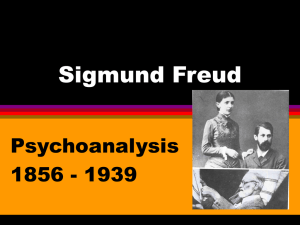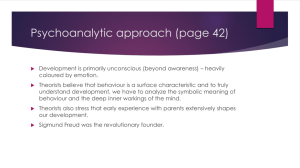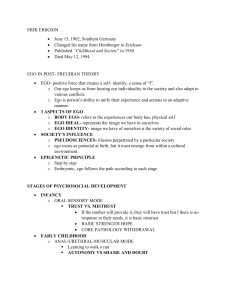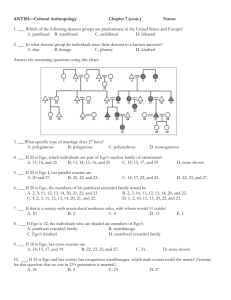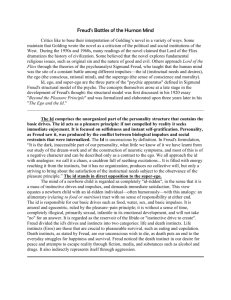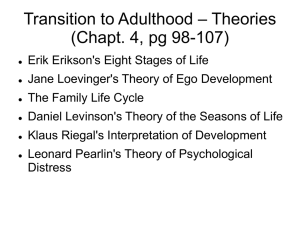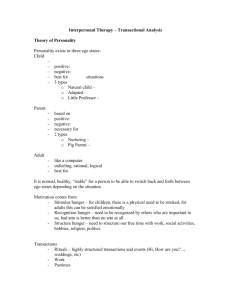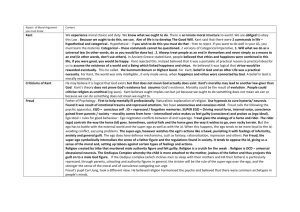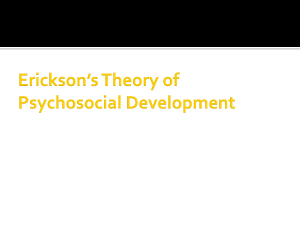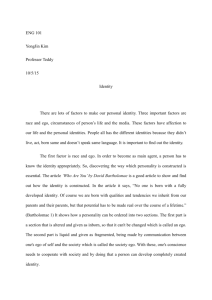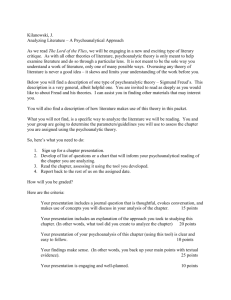1 Freud - the anatomy of mental personality
advertisement
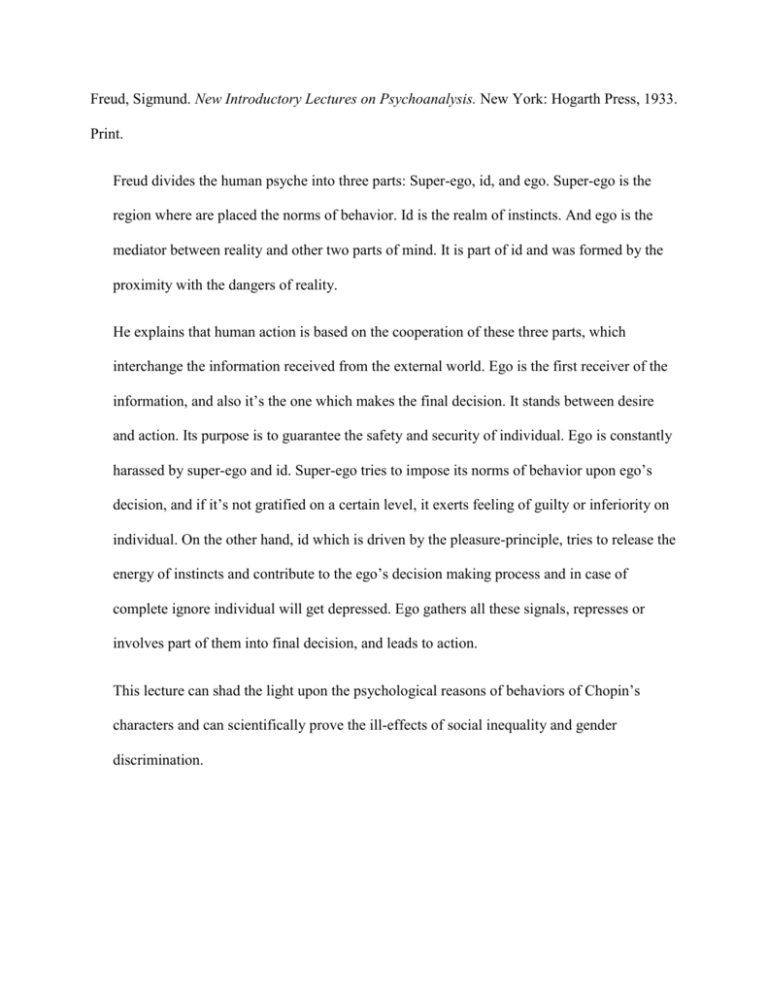
Freud, Sigmund. New Introductory Lectures on Psychoanalysis. New York: Hogarth Press, 1933. Print. Freud divides the human psyche into three parts: Super-ego, id, and ego. Super-ego is the region where are placed the norms of behavior. Id is the realm of instincts. And ego is the mediator between reality and other two parts of mind. It is part of id and was formed by the proximity with the dangers of reality. He explains that human action is based on the cooperation of these three parts, which interchange the information received from the external world. Ego is the first receiver of the information, and also it’s the one which makes the final decision. It stands between desire and action. Its purpose is to guarantee the safety and security of individual. Ego is constantly harassed by super-ego and id. Super-ego tries to impose its norms of behavior upon ego’s decision, and if it’s not gratified on a certain level, it exerts feeling of guilty or inferiority on individual. On the other hand, id which is driven by the pleasure-principle, tries to release the energy of instincts and contribute to the ego’s decision making process and in case of complete ignore individual will get depressed. Ego gathers all these signals, represses or involves part of them into final decision, and leads to action. This lecture can shad the light upon the psychological reasons of behaviors of Chopin’s characters and can scientifically prove the ill-effects of social inequality and gender discrimination.

